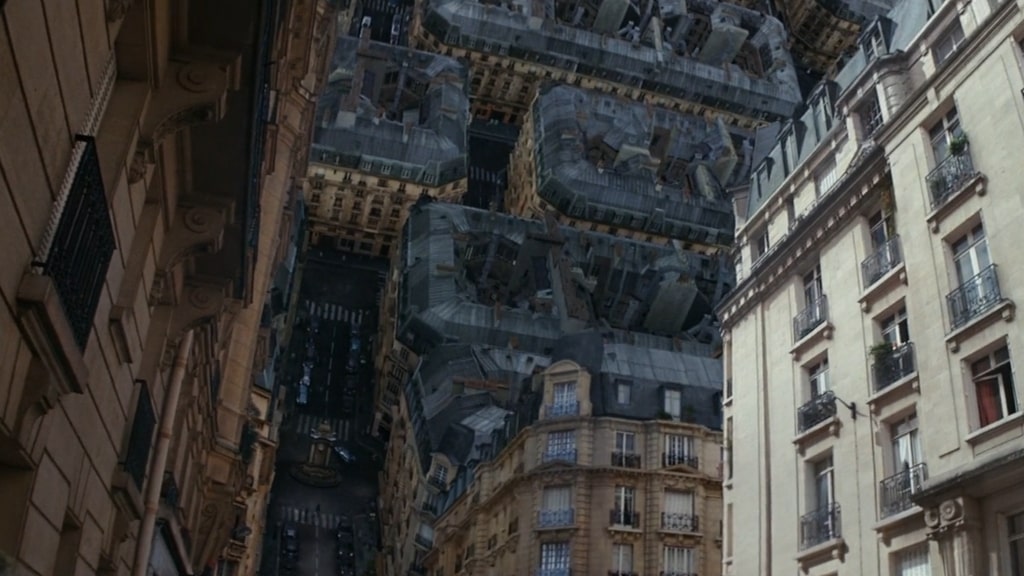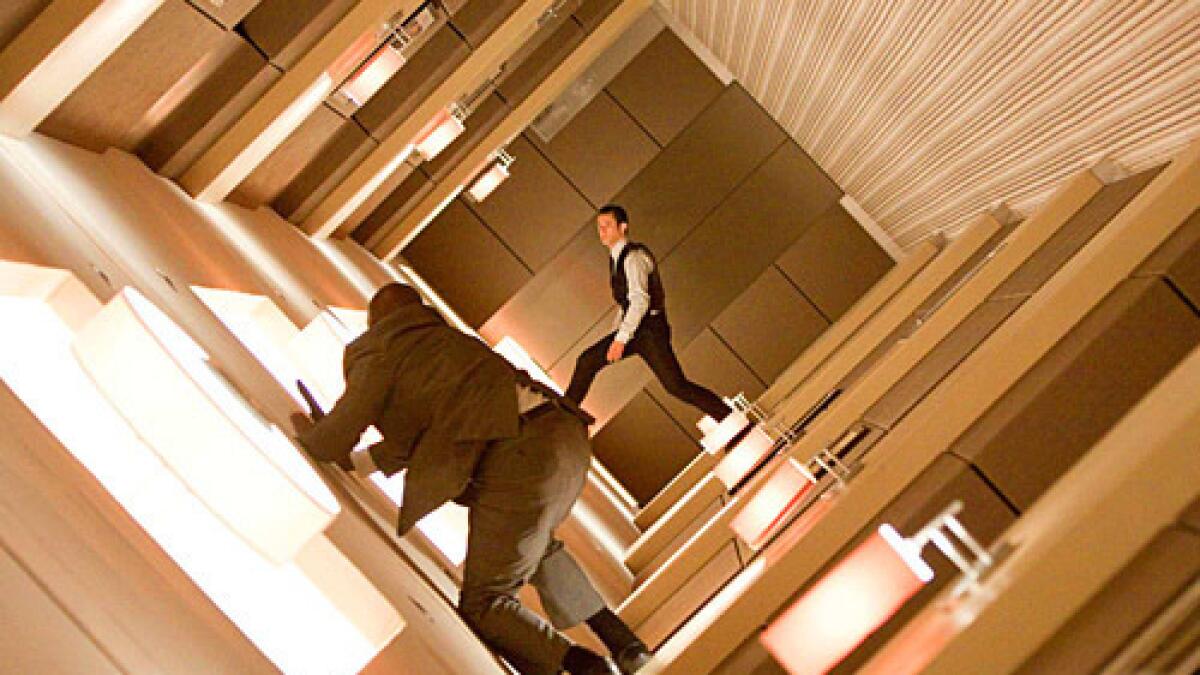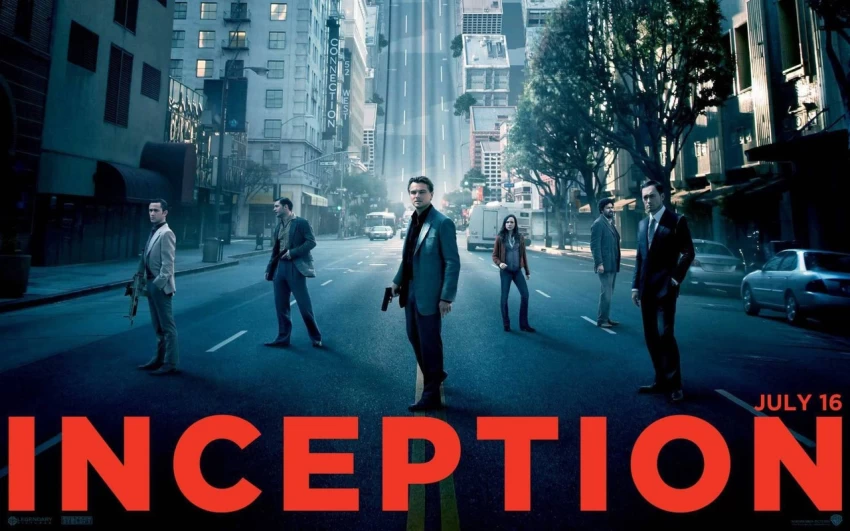2010 science fiction heist thriller “Inception” directed by Christopher Nolan features a talented ensemble cast, including Leonardo DiCaprio, Joseph Gordon-Levitt, Ellen Page, Tom Hardy, and others.
The story revolves around Dom Cobb (played by DiCaprio), a skilled thief who specialises in entering the dreams of others to extract their deepest secrets. However, instead of stealing information, he is tasked with the challenging job of implanting an idea into the mind of a target. The concept of shared dreaming, dream layers, and the manipulation of time within dreams are central elements of the plot.

The film received critical acclaim for its innovative concept, intricate plot, and impressive visual effects. It explores themes of reality, memory, and the subconscious, and it has become known for its mind-bending narrative and thought-provoking nature. “Inception” has gained a reputation as one of the most influential and iconic science fiction films of the 21st century.
“Inception” also introduces a groundbreaking concept of dream architecture that serves as the foundation for the film’s mind-bending narrative. The exploration of dream worlds, characterised by their malleable and ever-shifting architecture, adds a layer of complexity and visual spectacle to the story.
The Unbounded Nature of Dream Architecture
The unbounded nature of dream architecture in “Inception” is a pivotal element that elevates the film’s narrative to unprecedented heights. Unlike the constraints of the physical world, dream architecture within the movie is liberated from the shackles of reality, allowing for the creation of surreal and fantastical landscapes that defy conventional understanding. This aspect of the film not only serves as a visual spectacle but also becomes a thematic cornerstone, symbolizing the limitless potential of the human imagination.

In dreams, the characters traverse landscapes that challenge the very fabric of spatial and physical norms. The movie presents gravity-defying environments, where up and down become subjective concepts, and buildings seemingly float in mid-air. The manipulation of gravity is a recurring theme, and characters often find themselves navigating through spaces where the laws of physics no longer apply. This disorientation adds to the dreamlike quality of the film, immersing the audience in a world where the familiar is continuously subverted.
The Folding City
The Folding City sequence in “Inception” stands out as a cinematic masterpiece, exemplifying the film’s exploration of dream architecture and its unbounded, surreal nature. This iconic scene not only captivates the audience with its visual splendor but also serves as a metaphorical representation of the manipulation and distortion of reality within the dream world.

As the characters navigate through this dream layer, the cityscape undergoes a mesmerizing transformation, defying the laws of physics and architectural norms. Buildings fold onto themselves with a seamless elegance, creating a visual spectacle that challenges the viewer’s perception of space and geometry. This folding and unfolding of the city not only showcase the creativity of the dream architects within the narrative but also mirror the malleability of the dream space itself.
The Folding City sequence is a testament to Christopher Nolan’s commitment to practical effects and in-camera techniques. The filmmakers employed a combination of practical set construction, clever camera work, and visual effects to bring this surreal landscape to life. The result is a sequence that feels tangible and immersive, despite its inherently unreal and dreamlike nature. This dedication to practical effects enhances the impact of the scene, making it a memorable and groundbreaking moment in cinematic history.

Metaphorically, the Folding City represents the fluid and dynamic nature of the dream world. In dreams, spatial and architectural conventions can be bent and twisted, allowing the dreamer’s subconscious mind to shape the environment in ways unimaginable in the waking world. The folding and rearranging of the cityscape also reflect the characters’ manipulation of the dream space to achieve their objectives, adding a layer of depth to the narrative.
Additionally, the Folding City sequence contributes to the film’s exploration of the theme of reality and perception. The dream architects, led by Dom Cobb, not only navigate through these dreamscapes but actively reshape and manipulate them to suit their needs. This theme aligns with the broader narrative of the film, where the characters grapple with the blurred lines between reality and dreams, challenging the audience to question their own perceptions of what is real and what is illusion.
Dreams within Dreams
The film takes the concept of dream architecture to new heights by introducing the notion of dreams within dreams. Each dream level presents its own distinct architectural environment, with the dreamers having the ability to delve deeper into the subconscious. As the characters navigate through these dream layers, the architecture becomes increasingly complex and unpredictable, reflecting the depths of the human mind.
Symbolism and Metaphor
Beyond its visual extravagance, the dream architecture in “Inception” carries symbolic and metaphorical weight. The manipulation of the dream world becomes a metaphor for the character’s inner struggles and psychological challenges. The intricate labyrinths and shifting landscapes mirror the complexity of the human mind, where buried memories and unresolved emotions shape the dreamer’s experience.

Architectural Inception
The term “inception” in the film refers not only to the planting of an idea but also to the creation of dream worlds within dream worlds. The characters, led by Dom Cobb, act as architects within the dream space, designing and constructing environments that serve their objectives. This architectural inception adds a layer of strategic depth to the narrative, as the characters must navigate not only the dreams themselves but also the subconscious minds of both themselves and their targets.
Conclusion
In addition to its complex story and endearing cast of characters, “Inception” is regarded as a landmark work of film because of its innovative depiction of dream architecture. A visual feast for viewers, the film’s examination of the infinite and ever-changing nature of dreamscapes adds to its conceptual complexity. The dream structure in “Inception” is more than just a setting; it serves as a narrative device that leads the protagonists into an intriguing and bizarre investigation of the human psyche.
Architectural Evolution: Navigating the Contrasts Between Traditional and Contemporary Styles





